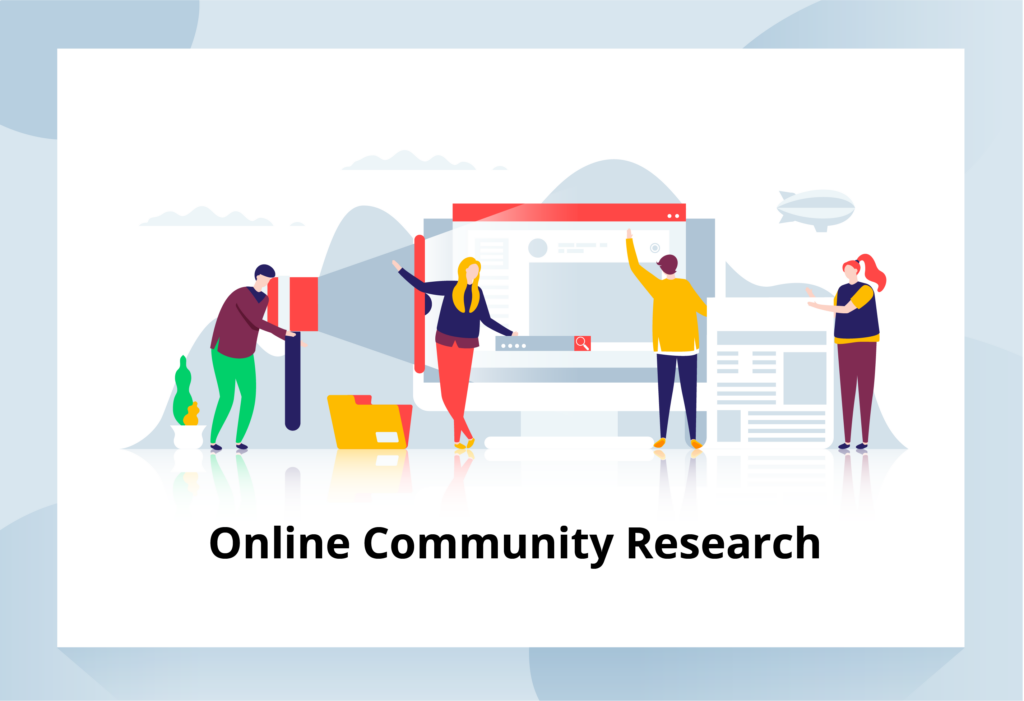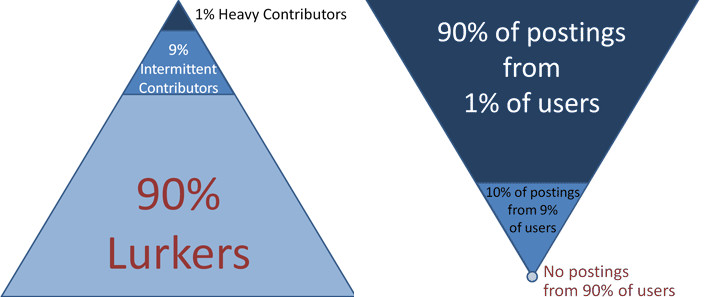Online Community Research: 10 Things You Need to Know.

Want to use online community research to gather great insight into your target market? Follow these tips for beginning and moderately experienced researchers.
Do your competitors seem to be constantly pulling ahead of you? Do they seem like they know exactly what your shared market is thinking about at any given time? If your answer is “yes” to either of these questions, it is probably because your competitors have unlocked the secrets of online community research.
Simply put, online community research is a means to get insight into your target market, figuring out what they want from you as a company. To properly carry out community research you need to have the following elements in place.
1. Put A Competent Multidisciplinary Team In Place
Setting up an online community is no easy ride and neither is conducting research. We cannot, therefore, understate the importance of having a solid team to drive your efforts.
Typically, a strategic director will be at the front of this endeavor. They need to develop and execute the community strategy that online community research fits into. They also need to ensure that the community strategy ties directly into the business objectives of the company.
It’s not uncommon for the company’s marketing director to fulfill this role. Working in conjunction with the strategic director is the community manager or engagement manager. Their role is to make sure the community is running smoothly through proactive on-boarding and engaging with members. They’re also in charge of reporting and building systems to improve the overall participation environment of the community.
Next up is a content producer i.e. someone in charge of producing ongoing content. So where do you get the best content? From your online community research that’s where! If you’re not using an out of the box community platform that comes with an IT support team, you’ll need someone with IT chops to decide on what platform to use, as well as tackle all the technical difficulties that might come up. This could be your IT manager or a developer.
Finally, a project manager, operations lead or business manager is required. Their role is to engage with all stakeholders, ensure the community team is on track, and measure the success of all your community efforts.
2. Invest In Awesome Technology
Tempted to build out the entirety of your platform in-house? Don’t! Why waste plenty of time, money and resources on getting it right, and risk still not having exactly what you want? There are plenty of providers that will offer you a platform that is suited to what you and your community want.
The rise of third-party APIs means that integrating with hundreds or thousands of apps to help automate tasks is now possible. This means saving plenty of resources, especially time. All this means that you can now focus on tailoring your chosen platform to your taste and that of your intended audience. Just make sure the aesthetics of the platform should be something your community members love to interact with.
If your users find your platform difficult to use, they’ll struggle to keep using it. It’s got to be intuitive and the color palette should be appealing. This will entice your members to come back to the platform as they enjoy the user experience. Also, remember to factor in the most popular devices your members are using to access the platform. The data speaks for itself – we are now at the stage of our online evolution where internet users are accessing the net by a mobile device more than they are desktop devices.
Related Post: CMNTY Is A Powerful Alternative to Vision Critical Customer Intelligence Software. Here’s Why.
3. Proactively Engage With Community Members
While the technology that goes into the platform plays a big part, you need to look further than that if you want to make your online community a success. Making the platform technically robust and pleasing to the eye is just the tip of the iceberg. You need to be able to interact with the people participating on the forum. The community manager – your person running point on the platform – needs to be able to draw the participating employees from their shells. It is only when they are talking and interacting freely that you will reap the benefits. A few questions should ring at the back of the community manager’s mind.
- What tone of voice are the members expecting?
- Why should they leave their work and join this online community?
- If they join, why should they return after the first time?
- Do they know enough about what you are using the information you are gathering?
- Do they feel valued?
Your community manager should be in a position to act on these questions. So, together with the technically sound and robust platform, excellent management will go a long way in ensuring the success of the online community research. Something worth noting here – whilst it might not sound like it, 10% engagement on a community platform equates to massive success.
Related Post: Qualitative Research Software
4. Invite The Right Participants
Not all the users of your platform think and act alike. Unlike online questionnaires that can be answered in a few minutes or so or focus groups that typically run for a couple of hours, online community research can take weeks. Some people are not overly comfortable on online forums and would rather not take part.
Your platform will, therefore, have more people who prefer to spend more time online than the digitally reclusive ones. So, before you make sweeping announcements that require everyone to sign onto the platform, it would be wise to send out invitations instead. This ensures that the people that do sign up are those that really want to be part of the online community. Even then, however, remember that only 1 percent of members will actively contribute content. 9 percent will contribute or interact with that which has been posted. The remaining 90 percent will just read through.
(Image source: Jakob Nielsen)
In a private community, however, the numbers of active users are higher. It still doesn’t cross halfway, though, maxing out at about 30 to 40 percent of members.
5. Be Open To New Methods Of Community Research
When someone talks about research in a community, the image that comes to mind is of an official with a clipboard, ticking off answers to questions. The research in an online community is totally different. Amongst the members, there is a constant dialogue regarding the subject in question. There isn’t a specific answer but the project manager or researcher gains invaluable insight about the members’ take on the subject.
For example, idea contests (aka. brainstorming challenges) create a lot of information for everyone to think about. In the end, many insights can be gained with a simple method like this. There can be questionnaires when you want a specific answer to something, but they should never be the be-all end-all of the interactions on the forum.
Related Post: Consumer Research Software
6. Find New Ways To Motivate Members
First and foremost, your employees and customers will sign up because they want to contribute and feel valued. This is what you call intrinsic motivation. This motivation will, however, wane with time. If you do not act, you will find that participation in the forum will go down and your community research will fall flat. You, therefore, need to find extrinsic motivators to light a fire under the members.
Enter gamification. This is a technique to encourage engagement with your community. In this short video Kim Celestre, Senior Analyst with Forrester Research, Inc. talks about how gamification is successfully being used to engage customer communities as well as employees:
Gamification
This is done through the application of typical elements of game playing (e.g., point scoring, competition with others, rules of play) to community building activities. In so doing, members get a kick out of interacting, drawing in more engagement from others. As a reward, participating and successful members get badges on their community profile. Who doesn’t enjoy a bit of clout?
7. Know When To Stop
Research on an online platform usually lasts four weeks. Exceed that and your platform becomes a constant nagging factor to the members. You either die a hero or live long enough to become the villain. Set clear goals and a timeframe and inform your members about them. As you present the different tasks and activities, the members will be focused on accomplishing them so that you can meet the goals in the given timeframe. If you exceed this time bracket, the members lose focus and the activities in the forum start to become annoying.
You should also watch out for the level of interaction at around the halfway point of the project. This is when things might start to get stale and boring. You need to breathe new life into the group so that the interaction does not fade.
8. Use The Right Kind Of Dialogue, At The Right Time
Synchronous dialogue is when members are interacting with each other in real time. An example is when the members are communicating via an online group chat. On the other hand, there is asynchronous dialogue, which is the most common form. Here, the community manager or other members post content and everyone else contributes to it at their own convenience. Though you can use both of these methods of communication concurrently, there are instances where only one of them is feasible.
Related Post: Community Engagement Strategies – 4 Effective Ways to Keep Members Engaged and Inspired
For example, if you are introducing a new idea or starting off a meeting, the synchronous dialogue is the ideal method to use. When you offer a challenge or task, you need people to take their time with it in order to solve it. Asynchronous dialogue works best here.
9. Keep Your Finger On The Pulse At Individual And Subgroup level
An online community bears plenty of fruit for your business when the members are vibrant and interactive. For that reason, you should always keep your eye on the individual performance of your community members. How many people are creating content? How many of them are replying? And how many are reading? This enables you to take action on an individual or subgroup level.
A task might be too difficult and keeping watch enables you to make a timely intervention. Keep in mind, however, that not everyone will get into the thick of things. Many are just content to watch what’s happening. This is the 90 percent we pointed out earlier.
10. Remember That Community Research In Itself Is Just A Tool
When you set up an online community the research is not your real end goal, right? It is just a means of reaching your goals. Before you embark on online community research, therefore, you should be sure that it is what you need to do lest you spend resources you would have found more productive elsewhere. As a research tool, it provides deeper insight into your market base. It shows you where you need to change so that you can meet their expectations. The platform will help you to connect with your customers on a deeper level, understanding them better and earning their loyalty to your brand.



